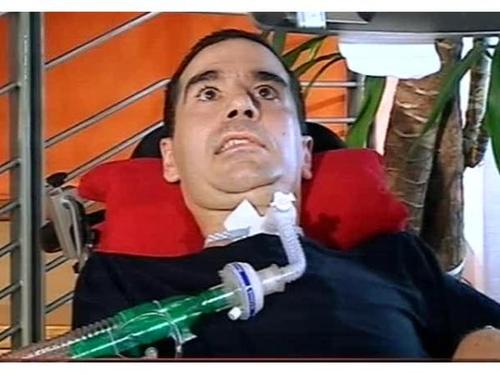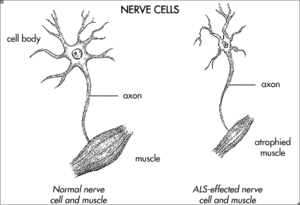
Stefano Bergonovo was diagnosed with ALS in 2008
A recent study published in the Journal of Neuropathology & Experimental Neurology (subscription required) by researchers at the Veterans Affairs Medical Center, Bedford, Massachussetts and Boston University Medical Center has uncovered evidence that brain trauma can mimic Amyotrophic Lateral Sclerosis (ALS) or more commonly, Lou Gehrig’s disease.
Gehrig was the legendary Yankees baseball player, renowned for his powerful hitting and his record streak of consecutive appearances before Cal Ripken surpassed it in 1995. He died of ALS in 1941, three years after being diagnosed with that condition.
ALS falls under the constellation of Motor Neurone Diseases (MND). The disease leads to degeneration of the motor neurons of the central nervous system causing progressive weakness and wasting of voluntary muscles – resulting in a loss of limb movement, speech and respiratory difficulties, and eventually death through respiratory failure within 3-5 years. The cognitive functions remain largely intact. The aetiology of ALS remains the cause of much speculation.

Stephen Hawking, one of the geniuses of the 20th century has a variation of ALS that has enabled him to survive and function in a very precisely controlled environment created by electronically assisted technology (POSSUM).
The Massachussetts doctors were investigating brain damage in deceased NFL players who had been diagnosed with ALS. Studies have shown that athletes like NFL and soccer players show a much higher incidence of ALS as compared to the general population which remains at 1-2 per 100,000.
The researchers discovered little evidence to support evidence of primary motor neuron degeneration, an ALS characteristic but more pertinently a history of brain trauma and concussion that led to a similar degradation of the central nervous system and motor behaviour. Specifically, it has been shown that sustained head trauma can result in the release of two proteins (TDP- 43) from the brain into the spinal cord that cause motor neuron degeneration. However, it is likely an interaction of genetic and environmental factors coupled with the concussions that lead to ALS manifestation.
The disease is inextricably linked with Lou Gehrig. A more careful examination of his injury record shows that there were at least six incidences of concussion like incidences in his baseball career and potentially more as a hard charging full back playing football while at Columbia University.

The more relevant part is the public perception of Gehrig as a heroic figure battling through these myriad injuries on his way to establishing his 2130 game unbroken streak. It is possibly accumulation of injuries without a playing helmet and inadequate time away from the field to recuperate that could have hastened the onset of ALS. Which begs the question -does this make Gehrig a hero or victim? A pioneer in the unmasking of a poorly understood disease or a tragic figure who underscores the dangers to the unprotected head and body.
The findings could shed light on the increased incidence of ALS in contact sports. An Italian study of 7000 professional soccer players from 1970 to 2002 showed 18 of them diagnosed with ALS The study showed Serie players were seven times more susceptible than the non-playing population.
Stefano Bergonovo, the former Milan and Fiorentina striker whose playing career spanned the 1980s was diagnosed with ALS in 2008. He remains paralyzed with only eye functions possible. The same condition was responsible for Gianluca Signorini’s death in 2002. He spent a good part of the 1980s in Genoa establishing a reputation as a hard tackling libero.
Soccer is a game where players frequently collide heads going for the ball leading to concussion. Coaches are frequently under pressure to put the player back without recovering adequately in a crowded calender of matches. Cognitive declines following head trauma in contact sports are well documented. This is the first substantial study linking concussion to CNS motor degeneration. The caveat is possible genetic and environmental markers that cause a fatal interaction which need to be further investigated.
In Italy’s case, the elevated numbers of MND are out of proportion to the rest of the leagues. There are any number of unsubstantiated reports ranging from doping to pesticides used on soccer pitches that have been implicated. However, this strengthens the case that the primary consideration should be adequate time to recover from concussions rather than perpetuating a heroic persona. Given that Lou Gehrig was the public face of ALS advocacy and support groups these new findings may lead to some sort of re-calibration.
To learn more here is the link to the ALS Association >>